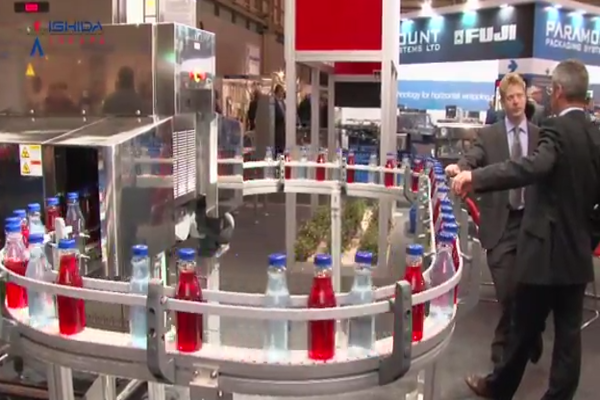FOODEX 2014: LIVE FROM THE SHOW FLOOR
Machine with the X-ray eyes: Ishida has drinks industry vision

Speaking to BeverageDaily.com at Foodex 2014 in Birmingham, UK, Ishida Europe marketing manager Torsten Giese said: “Demand is definitely increasing in the beverage industry, and will continue to do so. But by how many per cent? Who knows, going forward."
“It could be driven by a negative event – someone big has to remove products from the shelves. They adopt the technology, then the rest of the sector follows,” he added.
“The sector logic is based on fear and threat,” Giese said, noting that X-ray uptake in drinks (already a growth area) would be further driven by new technological advances and falling machine prices.
Giese explained that X-ray inspection systems first became popular in Japan around 12 years ago and began to take-off in Europe from 2008.
Quality and contamination control
The company announced the launch of its side-beam X-ray machine (pictured) for beverage firms in mid-2013, and Giese said units (part of the IX-GA range) have already been sold in Hungary, France and Germany.
Advantages of X-ray machines, he added, include the ability to monitor fill levels in bottles, cartons, and pouches (eliminating the need for a checkweigher), detect contaminants and seal monitoring – to avoid under-filled or poorly sealed packs.
Why does Ishida believe it has an advantage over the competition? One reason is its Genetic Algorithm (GA) technology, which Giese claims allows better detection of contaminants – metal, glass, bone, shell, grit, plastic and rubber.
Using GA operators can ‘train’ the system for greater detection sensitivity to known contaminants.
Nonetheless, Giese said that the bulk of Ishida’s X-ray business still resides in food applications, products such as baby food where the risks resulting from contamination issues are high, and where consumers cannot feasibly visibly inspect the product in detail before consumption.
He added that ready meals, cereals, soups and meat (since metal tools are used to cut it, while it contains bones) are other popular application areas.
Struggle to detect glass-on-glass
One issue in the drinks space is difficulty of detecting glass-on-glass contamination in bottles, Giese noted, unless a machine used two X-ray beams. Ishida does not currently offer such a system, and he said it added significantly to the expense.
Giese agreed that the trend towards turbid soft drinks and opaque products including dairy and fruit juice mixed drinks with pieces could spark uptake.
“Yes, it’s true that optical systems could struggle with such health and trend drinks, which are bringing increase competition to the likes of PepsiCo and Coca-Cola,” he said.
“This brings increased sensitivity to possible consumer incidents and an increased focus on food safety and quality control – it’s about consumer protection and brand protection.” Giese added.









